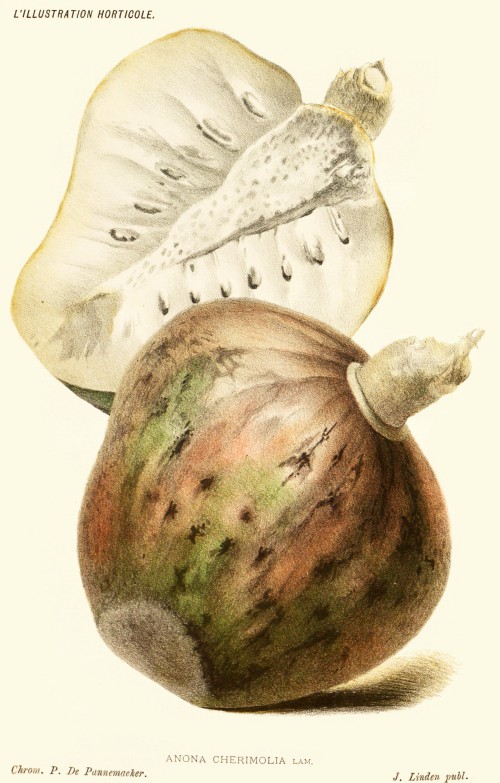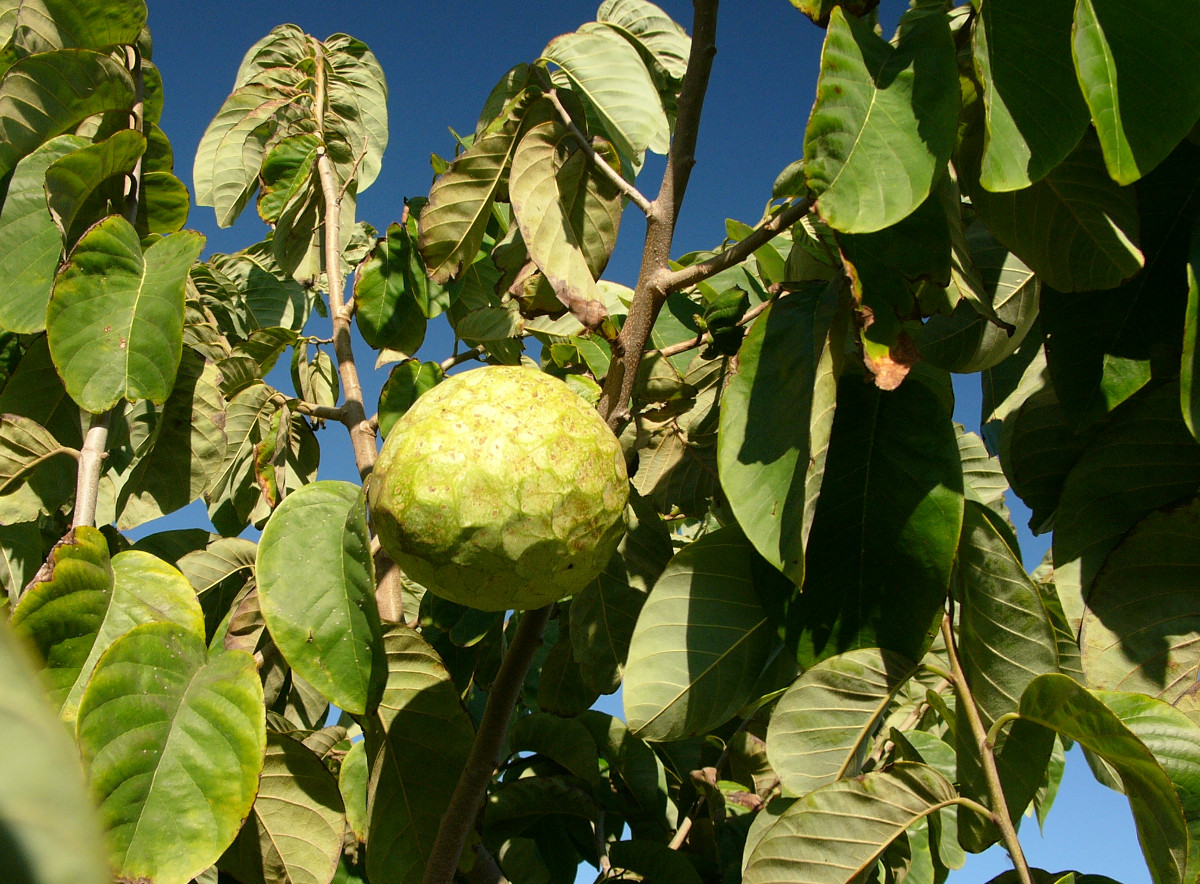Dies ist eine alte Version des Dokuments!
Annona cherimola Mill. - syn.Annona pubescens Salisb.; Annona tripetala Aiton - Annonaceae
cherimoya, custard-apple, Cherimoya
Evergreen tree, up to 7m tall, native to Central and South America, cultivated widely in the tropics and subtropics; leaves ovate, ovate-lanceolate, elliptic, obovate, thinly papery, abaxially tomentose, adaxially pubescent; inflorescences 1-3-flowered; petals outside greenish yellow to reddish, inside yellowish to whitish and basally purple-spotted, linear-oblong, 1.5-3cm, inner petals absent or reduced to minute scales; fruit cordate, conic, or ovoid, to 20×15cm, syncarp mostly green, pulp white; seeds flattened, ca.1cm, black-brown, turning paler when dry.
„The fruit, cherimoya, has good dessert qualities and is subacid and delicate. It is eaten raw, used in cooling drinks, and used in sherbets. It contains up to 18.4% sugar, 1.8% protein, and 0.4% fat.“
http://www.efloras.org/florataxon.aspx?flora_id=2&taxon_id=200008505
„Widely cultivated now, Annona cherimola is believed to originate from the Andes at altitudes of 700m to 2,400m although an alternate hypothesis postulates Central America as the origin of Annona cherimola because many of its wild relatives occur in this area. From there it was taken by Europeans to various parts of the tropics. Unlike other Annona species, A. cherimola has not successfully naturalized in West Africa, and in Australasia Annona glabra is often misidentified as this species.“
http://en.wikipedia.org/wiki/Annona_cherimola
„The trees bear fruit at four or five years old and do so only when carefully hand pollinated… Yields average 25-80 fruits per year (Colombia). In the 1950s, A.ceherimola was planted to replace diseased orange trees in Granada, Spain, and the crop is now common between there and the Mediterranean coast. In Jamaica the small, green, fragrant flowers are used to flavour snuff.“
[Minter, Sue. The greatest glass house: the rainforests recreated. HMSO, 1990, 81]
„The major compounds identified in the four cherimoya cultivars were methyl butanoate, butyl butanoate, 3-methylbutyl butanoate, 3-methylbutyl 3-methylbutanoate and 5-hydroxymethyl-2-furfural. These compounds represent 69.08 ± 5.22%, 56.56 ± 15.36%, 56.69 ± 9.28% and 71.82 ± 1.29% of the total volatiles for Funchal, Madeira, Mateus and Perry Vidal cultivars, respectively. This study showed that each cherimoya cultivars have 40 common compounds, corresponding to different chemical families, namely terpenes, esters, alcohols, fatty acids and carbonyl compounds…“
[Comparative analysis of the volatile fraction from Annona cherimola Mill. cultivars by solid-phase microextraction and gas chromatography-quadrupole mass spectrometry detection. Ferreira, L., Perestrelo, R., Camara, J. S., Talanta, Vol.77(3), 2009, 1087-1096]
HS-SPME-GC-O of cherimoya fruit showed 92 compounds present, 78 of them were positively identified. „… 18 odourants were considered as potentially odour-active compounds and contribute to the typical cherimoya aroma, from which 3-methylbutyl butanoate, α-pinene, methyl 2-methylbutanoate, butyl butanoate, and 3-methylbutyl 3-methylbutanoate were the most odour-active compounds.“
[Characterisation of odour‐active compounds in cherimoya (Annona cherimola Mill.) fruit., Pino, J.A., Roncal, E., Flavour and Fragrance Journal, 31(2), 2016, 143-148]

L’ Illustration horticole, vol.32 (1885)
http://plantgenera.org/species.php?id_species=66165

Cherimoya tree in Andalusia, Spain
Wikimedia Commons, Author: Hannes Grobe, 2006 CC BY-SA 2.5
